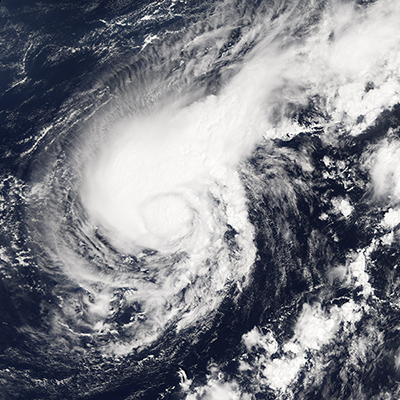Summer of 2023 – a season most of us would like to forget. It was a summer of extreme weather disasters and according to scientists, many of them were made worse and more intense by human-caused climate change. From the wildfires in Canada to Vermont inundated by unprecedented floods and Phoenix’s temperatures soaring to over 100° F for a full month, extreme weather is now the “new norm.” Several hurricanes, including Hurricane Idalia, the first major hurricane of the season, caused severe damage across Florida and the Southeast.
As our climate warms, the world is experiencing stronger winds, higher storm surges and record rainfalls during the hurricane season. Every year, hurricanes and storm-related flooding cause around $34 billion in damage to U.S. households and the areas at most at-risk, including the Gulf of Mexico, the Caribbean, and the beaches along the Atlantic.
Scientists have concluded that Earth’s apparent long-term rising temperatures can impact regular weather events, such as rainfall, hurricanes, tornadoes, and droughts. Such extreme weather has the potential to devastate and impact peoples’ lives and property across the globe on an increasingly serious scale. According to the NOAA, global temperatures rose about 1.98°F (1.1°C) from 1901 to 2020, but climate change refers to more than an increase in temperature – it also includes rises in sea levels, rises in ocean temperatures, changes in weather patterns like drought and flooding, and much more. In fact, the average global sea level has already risen by half a foot since 1900 — nearly four of those inches since 1970. Higher sea level can push more water inland during hurricane-related storm surges.
Many hurricane experts agree that there is a direct connection between climate change and stronger hurricanes.
Hurricanes get their energy from the ocean and through the years, human-caused climate change has trapped enormous amounts of extra heat on the planet. Most of that heat–over 90 percent–has been absorbed into the ocean. That makes the ocean warmer, and that hotter water right near the sea’s surface acts like an accelerant to storms as they form. In Florida, ocean temperatures broke 100° F this summer–nearly hot-tub water territory. That hurt coral reefs and other marine life, and primed the region for more intense storms. Since the 1970s, about twice as many storms are spinning up into Category 4 or 5 cyclones as before. It’s nearly three times as likely that an Atlantic-born tropical cyclone will wind up as a hurricane as it was three decades ago.
As we anticipate a future of more disastrous storms, building homes to withstand extreme weather events is crucial.
Hurricane season stretches from June 1 to November 30, but the financial hardship and long-term recovery from a hurricane can last for years to come. This is why, now more than ever, it’s important to consider hurricanes as you make choices concerning your current and future homes – especially if you live in a hurricane prone area.
Deltec Homes has been building round extreme weather resistant homes over five decades. We are renowned around the world for our hurricane-resistant homes. In that time, we have built over 5,000 homes -many of them in areas hit by the biggest storms on record – including hurricanes Katrina, Charley, and Sandy. Deltec Homes is the world leader in the design, engineering and manufacturing of hurricane-resistant residential structures.
Time after time, home after home, Deltec hurricane-resistant homes are left standing with no structural damage.

